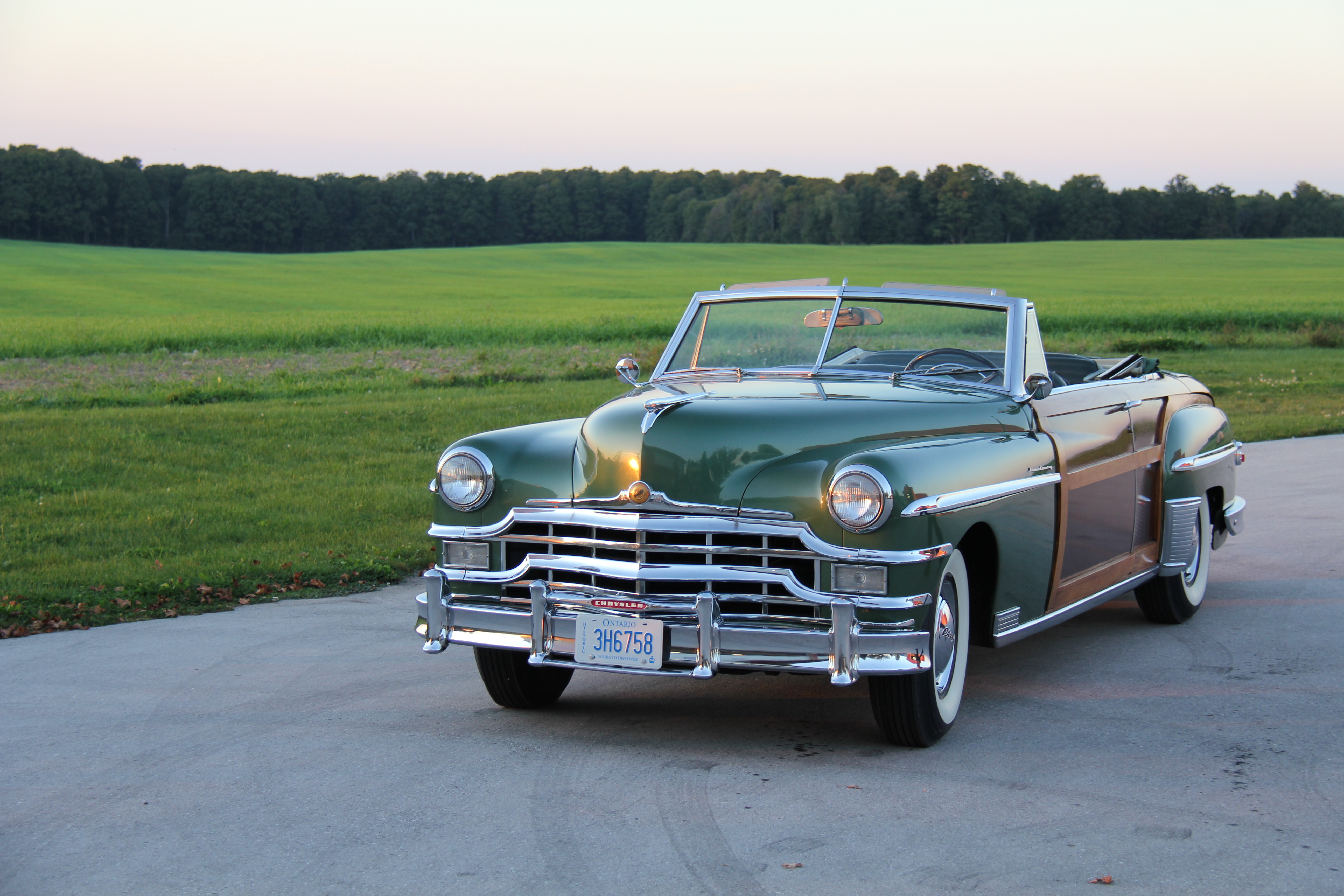1949 CHRYSLER TOWN AND COUNTRY WOODY CONVERTIBLE
1949 CHRYSLER TOWN AND COUNTRY WOODY NO 13
Engine: L-head, in-line straight eight 323.5 CU IN Produces: 135 HP
Prestomatic Fluid Drive semi-automatic transmission - 4 wheel hydraulic drum brakes
Weight 4610 Lbs Wheel Base: 131.5 in
Price New: $3,765.00 FOB Detroit Based on the New Yorker Chassis
Appear to be original seat fabric Solid ash panels
This was an all-new body for 1949. The 1949 Chrysler Town and Country was Chrysler’s last “Woody” convertible. It also marked Chrysler’s Twenty-fifth Anniversary of building exceptional automobiles.
There were only 993 Town and Country Convertibles built during 1949 with only about 115 of these still available.
Chrysler advertised the Town and Country as “Bigger on the inside, smaller on the outside.”
It featured the industry’s first padded dashboard and first starter / ignition key switch.
The Three Musketeers
Over the years Walter P. Chrysler always insisted on superior engineering in whatever product his name was associated. This was true even in the mass produced Chrysler automobiles of the Twenties and Thirties. To that end, when he bought out Maxwell Corporation, predecessor of Chrysler Corp, his engineering department was built around the “Three Musketeers,” the renowned team of Frederick M. Zeder, Owen R. Skelton, and Carl Breer. The distinctive design found in the Chrysler emblem of those years (see the Lang Collection’s 1935 Airfow) was not a lightning bolt but a stylized “Z” for Zeder.
Chrysler became so recognized for the innovation and engineering excellence that Zeder, Skelton, and Breer were a selling point for the Company’s products. While at Chrysler, the Three Musketeers introduced to the market the Chrysler Six, often called the first modern car. Among the now standard technological innovations they brought to the market place were high compression engines, power hydraulic brakes, downdraft carburetors, air cleaners, replaceable element oil filters, in-car temperature gauges, rubber engine mounts for a smoother ride, and adjustable front seats. They also added a feature the allowed the car to be started with a key while the driver depressed the accelerator pedal.
In 1928 Chrysler Corp employed 500 engineers to design and build their cars. That wasn’t enough so in 1931 the Three Musketeers convinced Chrysler to open the Chrysler Engineering Institute to teach incoming engineers the “Chrysler way of doing things.”
In 1934 Chrysler introduced the radically different and thoroughly modern Airflow design. The exterior was streamlined in the wind tunnel at the University of Michigan. These cars pioneered the use of unit-body construction with the then new stress-steel frame allowing engineers to move the engine forward 20” over the front axle while passengers were given a 50” wide rear seat within the car’s wheelbase giving a smoother ride. The so-called suicide doors allowed easy access to those wide and comfortable rear seats. These changes made the car lighter, safer, stronger, and more economical to operate. But the design was so novel and the economic times so bad that sales lagged behind what the Company needed to maintain production.
Stung by this response, the next twenty years saw Chrysler maintain their cutting edge engineering while becoming more conservative in their designs. Among the exceptions to this was the post war introduction of the Chrysler “Town and Country Woody.” A favorite of movie stars and celebrities of the period, the “Town and Country,” like the 1949 Chrysler Town and Country of the Lang Collection, featured gleaming tongue-in-grove woodwork that made it stand-out from any other car on the road.
Meanwhile, as the end of the first post-war decade approached Chrysler engineers in the Lab in Highland Park were “quietly” developing a powerful new V-8 engine with hemispherical combustion chambers that was no doubt going to change everything!





